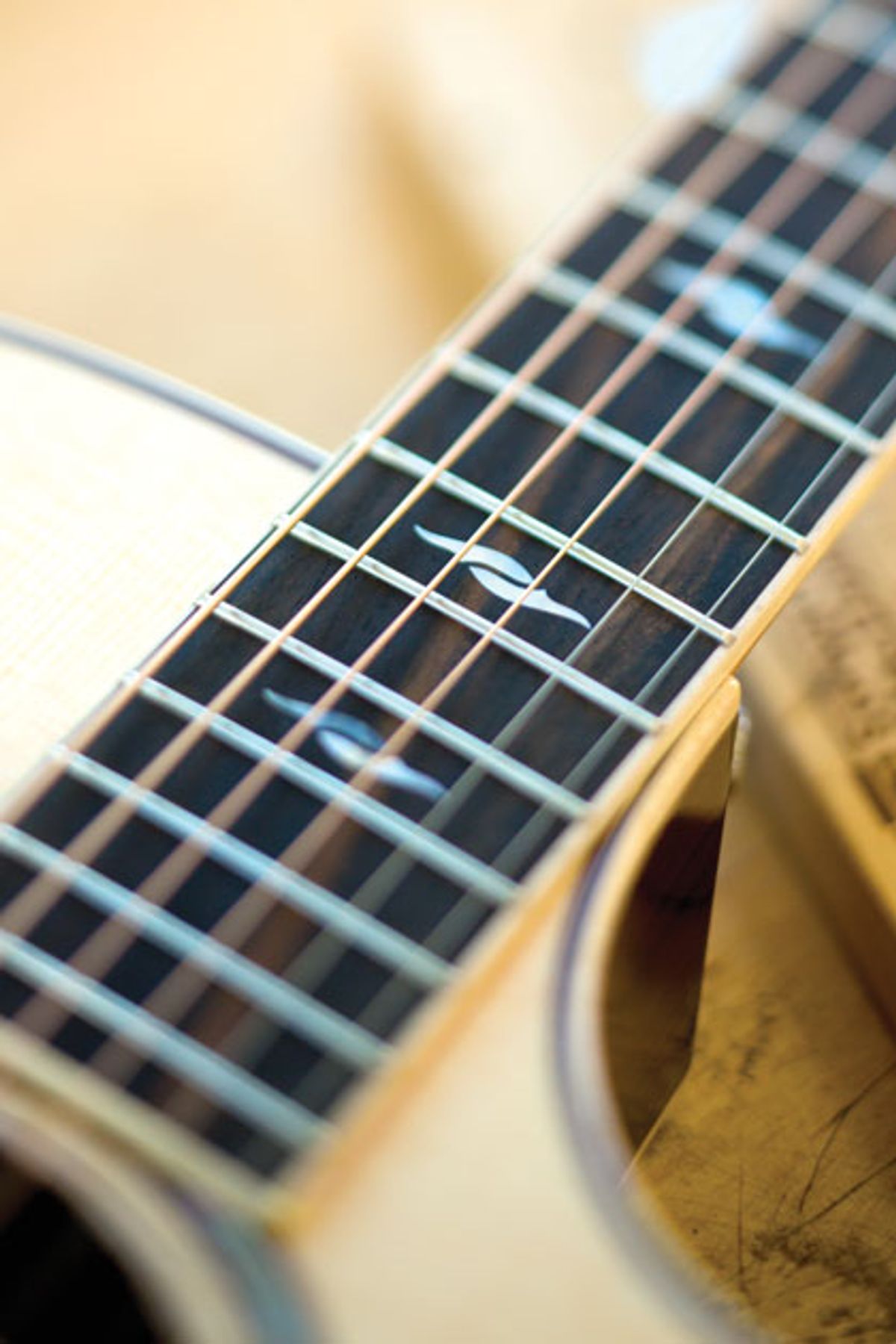
How the numerous elements that determine the feel of your guitar work together.
At first blush, the idea of a guitar’s feel might seem veiled in a cloud of mystery when you consider the complex alchemy of parameters that influence the way a guitar responds physically to our touch. Deconstructed into simpler pieces, the feel of a guitar is determined by the strings, the guitar they are stretched over, and the relationship between the two. Most guitarists will refer to this last factor as the guitar’s setup. But what exactly does this mean? Most players will say string height or action, yet inherently know it also means how the nuances of the guitar and string relationship feel when they play. For this month’s column, I’m going to talk about some of the ingredients Ilook at when considering a guitar’s setup.
Scale length. This is the theoretical vibrating length of the open, unfretted notes, and one of the origins of any guitar’s design. The basic law in effect is that the longer the scale length, the tighter any given string will need to be to achieve a certain pitch. This tension is a driving factor in establishing how other aspects of a guitar respond. More tension is more resistant to finger pressure, and, in turn, tends to produce a bolder, more robust note than less tension. Obviously, the scale isn’t adjustable after a guitar has been built, but it defines many of the following parameters.
String size. In a vibrating string, there are two basic wave motions that occur at the same time. One wave moves back and forth from the nut to the saddle. The other moves side to side, or in a circular motion. The trick is to prevent these two waves from interfering with each other. In other words, they need to be in tune with each other to work well. This is done by manipulating the factors that control string tension: how long the string is (the scale length), how tight the string is (what note it is tuned to), how strong the string is, and how much the string weighs.
The very core of the string is where the strength is. A long while back, string makers found they could change the weight of a string by winding another piece of wire around a center core. The over-winding changes the weight of a string but doesn’t change the strength very much, giving a string maker independent control of these two aspects. This is why different brands and types of strings can sound and feel so different, even if their finished sizes are identical.
Say I take a bronze-wound .053 string from two different makers and compare them, where one has a small-core wire and a proportionally large-wrap wire, and the other has a large-core wire and a small wrap. Even though both strings are .053s, the first string will have less tension and a different feel when compared to the second string with the larger core wire.
Action or string height. I like to think of the action as the distance between the bottom of the string and the top of the fret, where the string makes contact. This distance is how far we need to press the string to fret our notes cleanly. Less obvious is what we actually feel. The distance between the top of the string and the wood of the fretboard is what our fingertips sense. A guitar could have big, jumbo frets with very low string height yet still feel like the strings are a mile from the fretboard. This tends to give a player’s fretting hand a lot of room for expression. A player can create interesting vibrato effects by merely changing their finger pressure on the fretted note. Tall frets make string bending super easy, since a player can get sideways on the string for direct leverage. The drawback is players needs to have very good control of their finger pressure in order to keep pitches intonated accurately.
I often hear players say they want action as low as possible without fret buzz. What is important to understand is the relationship between string height and headroom, or dynamic range. When strings are very close to the frets, the frets act as a limiter for how big a vibration the strings are allowed to make. In other words, the string height determines how loudly a guitar can be played. This is different than an uneven, buzz-inducing fret. The strings are actually slapping against the frets on their first vibration after being struck, and then starting a motion determined by the clearance they have over the frets.
The flexibility of the guitar. A guitar’s neck is like one leg of a tuning fork. It moves and vibrates. It also flexes in response to tension. Every time a string is hit, there is a small change in the overall tension on the neck and, to a minute degree, the neck bends in response. An acoustic-flattop guitar has an even more pronounced effect, as the top of the guitar flexes in response to every plucked note.
This isn’t a complete study of all the factors at work in your favorite guitar’s setup. It’s a quick glance behind the curtain at a few of the important points to consider. With this info, you’ll hopefully better understand why your favorite guitar feels so right. For those guitars that just seem off, perhaps this information can shed some light on what needs to change to make them feel their best.

